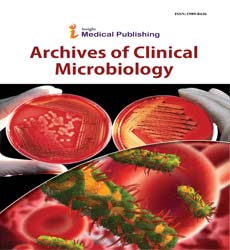Abstract
Evaluation of Short-Time Method with Tetrazolium Salt and Electron Carrier for Measuring Minimal Inhibitory Concentration of Antimicrobial Agents
Background: Minimal inhibitory concentration (MIC) measurements are usually conducted using the agar plate dilution test or the microdilution test. Methods for rapid evaluation of antimicrobial susceptibility using ATP measurements with luciferin-luciferase reagents and a tetrazolium salt have been reported.
Material and methods: We recently measured the minimal inhibitory concentrations (MICs) of various antimicrobial agents against 96 strains of Escherichia coli (1 standard strain and 95 clinically isolated strains) with Cell Counting Kit-8 containing a tetrazolium salt and an electron carrier using the Dry Plate Eiken for MIC measurement and compared the results with that obtained using the standard method.
Results: Agreement exceeded 90% for ampicillin, cefotiam, ceftazidime, flomoxef, aztreonam, imipenem, meropenem, gentamicin, and levofloxacin, and complete agreement exceeded 90% for cefotiam, ceftazidime, flomoxef, aztreonam, imipenem, meropenem, and levofloxacin. Agreement was in the range of 78.1- 86.5% for piperacillin, cefazolin, cefpodoxime, amikacin, and minocycline with complete agreement in the range 55.2-78.1%. Cefaclor had the lowest agreement and complete agreement (42.7% and 38.5, respectively). For the antimicrobial agents with low agreement (piperacillin, cefaclor, cefazolin, amikacin and minocycline), MICs measured by the short-time method were often below onehalf or one-fourth of that measured by the standard method, and regrowth of the bacteria appeared to occur 6 hours after the start of the short-time method.
Conclusion: The results of this study indicate that measuring absorbance with Cell Counting Kit-8 enables counting of viable bacteria. The use of this method for measuring MICs (short-time method) allowed the results of the susceptibility testing to be obtained in 6 hours, and the results correlated well with the results obtained using the standard method. Therefore, this method appears useful for the early detection of drug-resistant bacteria.
Author(s):
Yoshida M, Horino T, Nakazawa Y, Yoshikawa K, Hori S
Abstract | Full-Text | PDF
Share this

Abstracted/Indexed in
- Google Scholar
- Open J Gate
- Genamics JournalSeek
- The Global Impact Factor (GIF)
- Open Archive Initiative
- China National Knowledge Infrastructure (CNKI)
- Scimago
- Directory of Research Journal Indexing (DRJI)
- WorldCat
- Proquest Summons
- Publons
- MIAR
- ResearchGate
- University Grants Commission
- Geneva Foundation for Medical Education and Research
- Secret Search Engine Labs
Open Access Journals
- Aquaculture & Veterinary Science
- Chemistry & Chemical Sciences
- Clinical Sciences
- Engineering
- General Science
- Genetics & Molecular Biology
- Health Care & Nursing
- Immunology & Microbiology
- Materials Science
- Mathematics & Physics
- Medical Sciences
- Neurology & Psychiatry
- Oncology & Cancer Science
- Pharmaceutical Sciences

